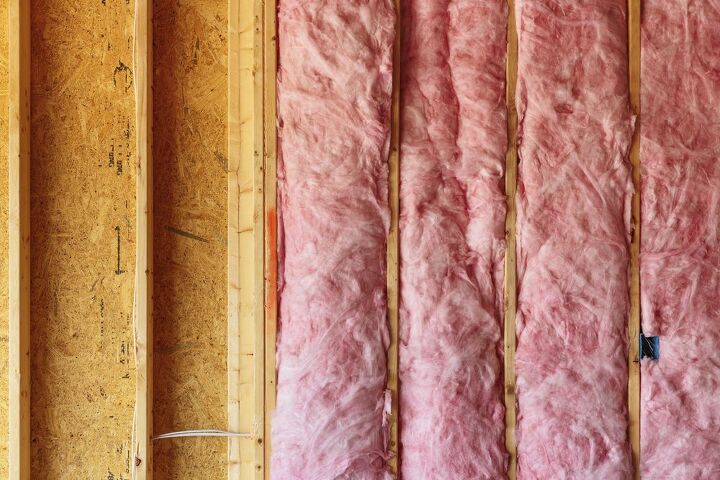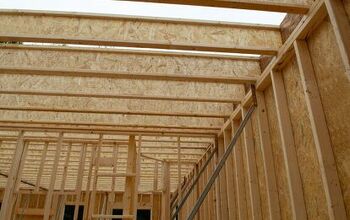Can Insulation Get Wet?

Insulation can help homeowners save about 11% on energy costs. Insulation helps keep out air and cold. This helps keep your home at a stable temperature, so you spend less on heating or cooling.
Your roofs, ceilings, walls, and floors are key places where insulation can save you costs. There are various insulation materials to choose from depending on the installation location. If you want to install new insulation or replace old ones, you might ask whether or not insulation can get wet.
Insulation can get wet, but the amount of moisture present directly affects its insulating properties. Generally, insulation should not get wet or damp. Cellulose or foam boards are more likely to absorb moisture. Even fiberglass and mineral insulation can collect moisture between their fibers, even if the fibers themselves are water-resistant. It’s advised to install roof insulation on dry days.
Here, we’ll deep dive into the effects of water on different insulation and other related queries.
Do You Need Insulation Installers?
Get free, zero-commitment quotes from pro contractors near you.

What Insulation Can Get Wet?
There are different kinds of insulation, and whether or not they can get wet depends on various factors. The first is what type of insulation it is in that subcategory, e.g. spray foam in the foam category.
The second is the extent of the water damage. For instance, a humid attic might cause a layer of condensation to form on foam batts. This means you may be able to just wipe off the moisture and let it dry instead of replacing the insulation.
However, a flooded basement that saturates your cellulose insulation likely requires replacement.
Lastly, it depends on how long the wet insulation has been left out. Most insulation materials take long to dry, despite the water-resistant materials. Moisture can fill the pockets in the batts, which may be difficult to remove.
Materials like cellulose, hemp, or straw take a long time to dry out or do not dry out at all. Keep in mind that even damp insulation’s insulating R-value can drop to 40%.
| Insulation Material | Can It Get Wet? |
| Fiberglass | Yes |
| Foam | Yes (Depends on Type) |
| Cellulose | Yes (Long Drying Time) |
| Mineral Wool | Yes |
| Naturally-Derived (e.g. Straw, Hemp) | No |
Can Fiberglass Insulation Get Wet?
Fiberglass insulation is water-resistant, but it is not waterproof. It can get wet, so long as it dries out before mold or mildew can form. When wet, fiberglass loses some of its insulating properties.
Wet fiberglass can also off-gas formaldehyde, which is not something you want in your indoor air.
Is Insulation Ruined if It Gets Wet?
In other words, does insulation need to be replaced if it’s wet? Not necessarily. Depending on what insulation you have, you can help the insulation dry with fans, ventilation, or removal.
Most naturally-derived insulation alternatives are probably ruined if they get wet. This includes hemp, straw, and even saturated cellulose. The key to preserving your insulation’s performance is by addressing leaks immediately.
How Long Does It Take Insulation to Dry?
Spray insulation like spray foam take no longer than 24 hours to dry completely after application. Wet fiberglass insulation might need to be removed or replaced if they are not dry within 48 to 72 hours. When cellulose insulation gets wet, it takes about 24 to 48 hours to dry.
Other insulation materials’ drying time depends on the extent of the leak and how long they’ve been exposed to moisture.
How Do I Know if I Have Mold in My Insulation?
A mold infestation may be easy to identify by sight. If your insulation lies behind drywall, you may need to probe a little deeper to assess the mold’s reach. But how do you know if your insulation is harboring mold?
- A Musty, Stuffy Smell: Mold tends to smell stale and unpleasant. This is a common mold symptom whether you’re concerned about your attic insulation or basement insulation.
- Patches of Black, Brown, or Green on Insulation: Different molds materialize as different colors from black to green and sometimes even white or pink.
- Leaky Pipes or Water Heaters: If you have a leak in your attic or basement, chances are there is mold on your insulation. Excess humidity from other sources also fosters mold growth.
- Condensation: Condensation on floors, doors, windows, and other parts of a room makes it easier for mold to grow. This moisture can seep into insulation, making your insulation a breeding ground for mold.
- Rotting Wooden Fixtures: Insulation commonly rests against wood beams, panels, and frames. If you notice that these are rotting, mold may be the culprit.
- Drywall Discoloration: Mold can attack drywall, too. Your drywall may start to discolor, indicating mold growth.
- Allergy Symptoms: Coughing, sneezing, other asthma-like symptoms, and even headaches can occur when mold is present.
You can contact a professional to test for mold, especially if your insulation is in hard-to-reach spots like crawl spaces.
What Happens if Insulation Gets Wet During Construction?
Unlike damp insulation in a very humid room, rain-soaked insulation may not be salvageable. If insulation is saturated with water during construction, it may not retain its insulation performance.
This can also lead to mold growth that homeowners may not notice until the infestation is severe. Rigid insulation like foam panels can be dried out, but other materials may need to be replaced completely.
What Does It Mean if Your Fiberglass Insulation Is Black?
Once you rule out mold as the reason for black insulation, the answer is probably dirt. Fiberglass insulation filters air traveling out of your house from air leaks. This air can contain dirt and after a few years, can turn your fiberglass black.
Is Wet Insulation Toxic?
Formaldehyde off-gasing and mold growth are the two key concerns with wet insulation. Formaldehyde can also damage surrounding structures like your roof, wall studs, and wall ties. This off-gassing is triggered by humidity, high temperatures, and leaks.
On the extreme end, mold growth can lead to mycotoxins spreading through your home. These toxins can cause serious symptoms like difficulty concentrating and dehydration.
Can Insulation Be Left Exposed?
In a basement, insulation should not be exposed. This can cause potential health risks like respiratory issues or skin conditions. Thus, most insulation needs to be sealed or covered.
The only exception is if you’re installing fiberglass insulation with a foil facing. Fiberglass insulation can also be exposed if the paper facing is installed wall-side, or it does not contain paper facing.
Many foam insulation brands can be exposed for up to 60 days. Then they must be covered with a thermal barrier like drywall, a concrete board, or sheet rock.
What to Do If Your Insulation Gets Wet
- Stop the leak, if present
- Assess the damage
- Remove affected panels or batts
- Let them dry
- Run a dehumidifier
- Inspect the dried batting for smells or structural damage
- Reinstall dry, intact batts
- Ensure your attic, basement, or roof is leak-free and air-tight
- Check surrounding areas for mold or mildew
Do You Need Insulation Installers?
Get free, zero-commitment quotes from pro contractors near you.

Related Questions
Can Kingspan insulation get wet?
Kingspan insulation offers a wide range of products from rigid foam insulation to vacuum insulated panels. Kingspan insulation is moisture-resistant, but not waterproof.
Why is there water inside the plastic of my basement insulation?
Most of the time, water inside the insulation plastic (the vapor barrier) stems from condensation. This happens on warm, humid days when hot air outside meets cool air inside your home.This can also happen on colder days when there is cool air outside and warm air inside your home.
What does wet fiberglass insulation smell like?
Wet fiberglass insulation can give off a sour or chemical smell. This may be due to formaldehyde off-gassing. Damaged, wet fiberglass can also smell stale, especially if not allowed to dry out.This can indicate mold. Note that dry fiberglass may also smell similarly, and may smell this way naturally.

We are a team of passionate homeowners, home improvement pros, and DIY enthusiasts who enjoy sharing home improvement, housekeeping, decorating, and more with other homeowners! Whether you're looking for a step-by-step guide on fixing an appliance or the cost of installing a fence, we've here to help.
More by Upgraded Home Team















![How To Reset A Whirlpool Cabrio Washer [In 5 Easy Steps!]](https://cdn-fastly.upgradedhome.com/media/2023/07/31/9076531/how-to-reset-a-whirlpool-cabrio-washer-in-5-easy-steps.jpg?size=350x220)











